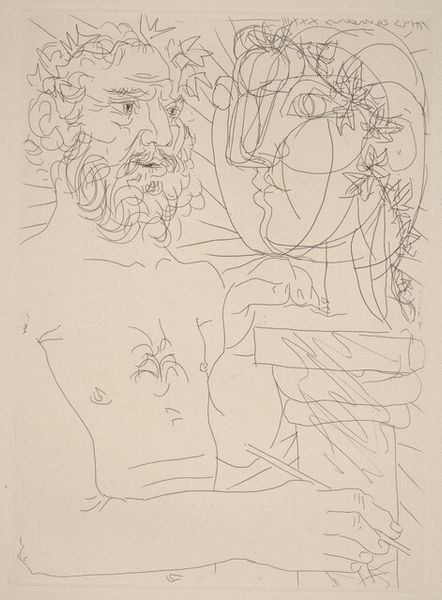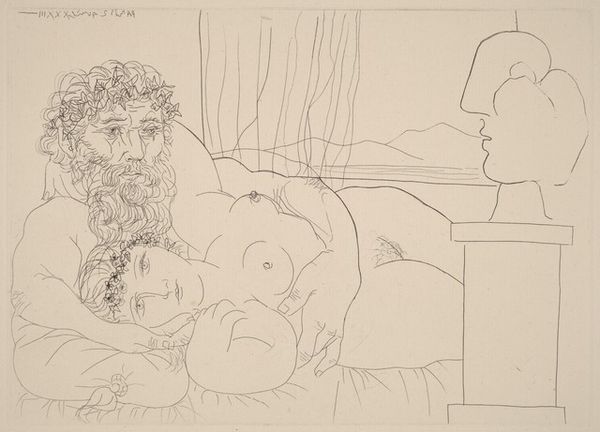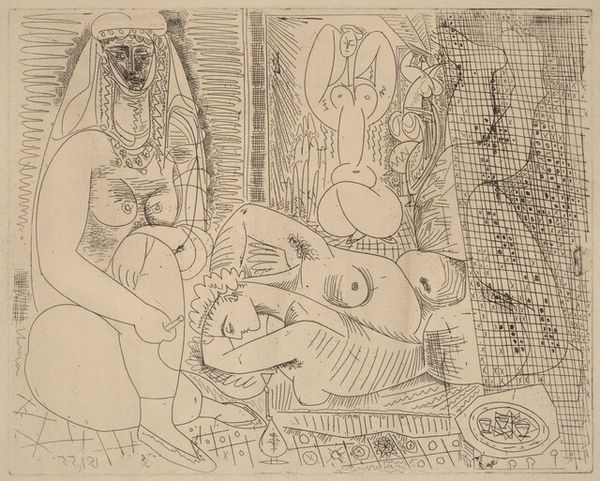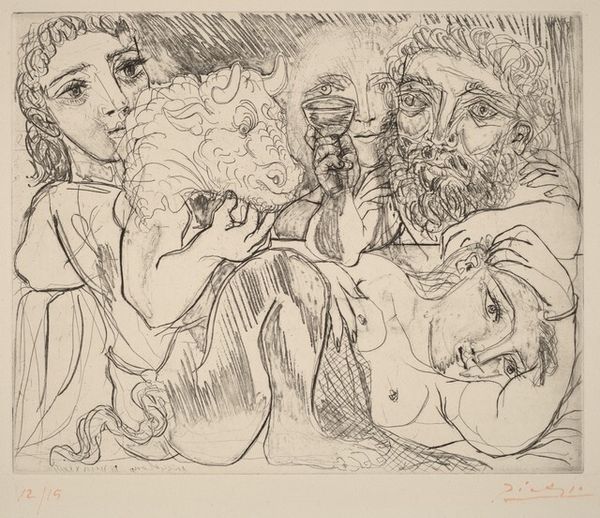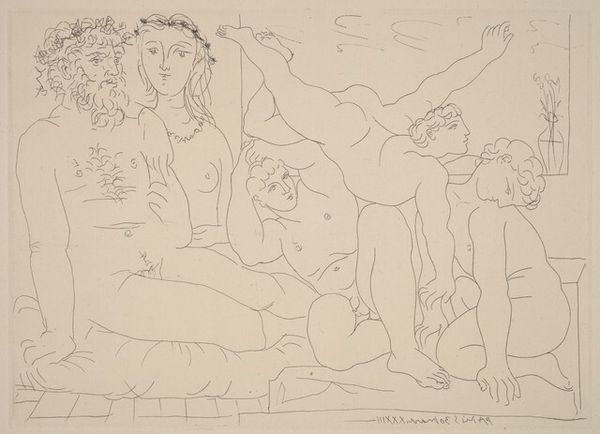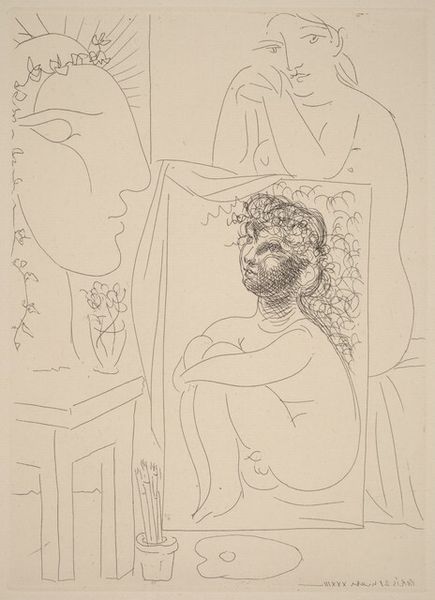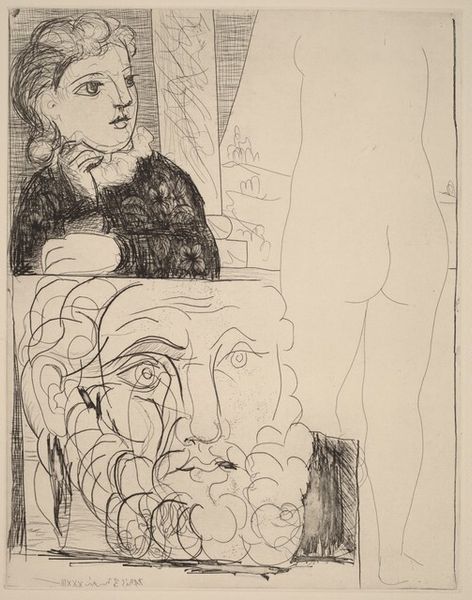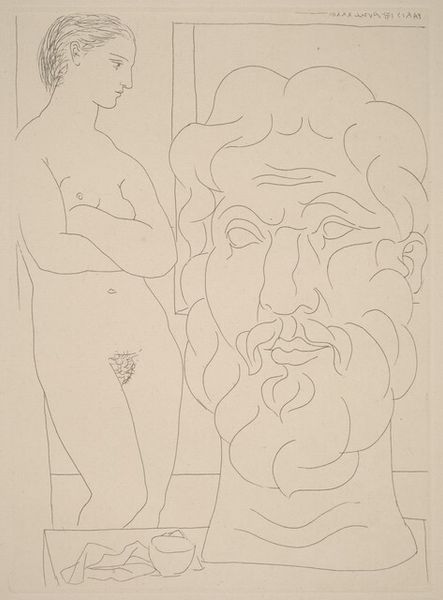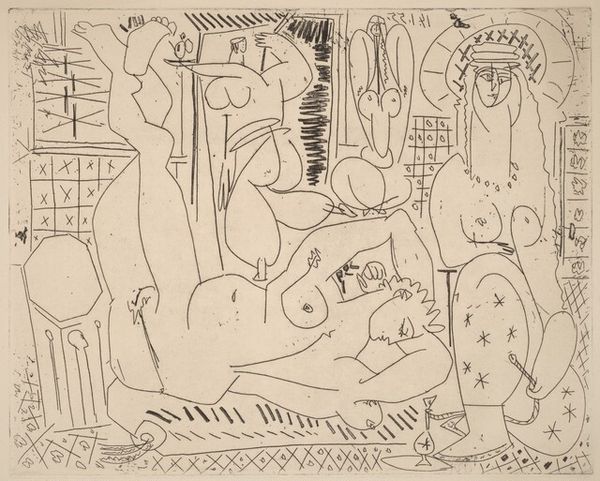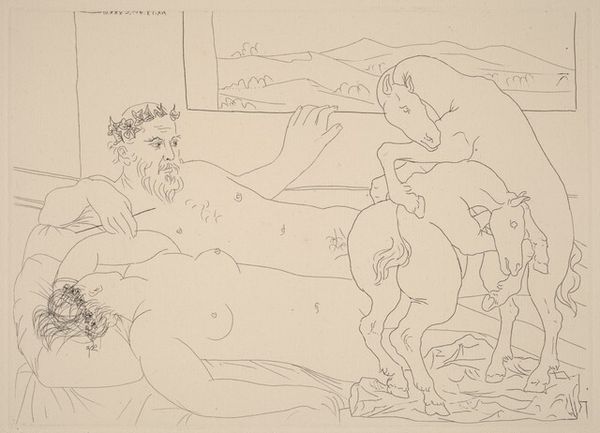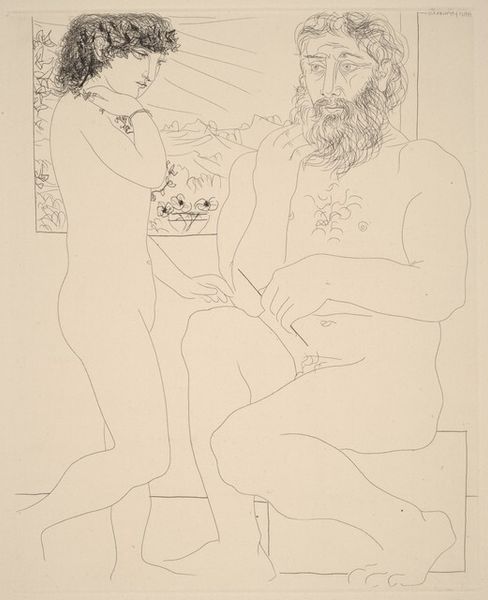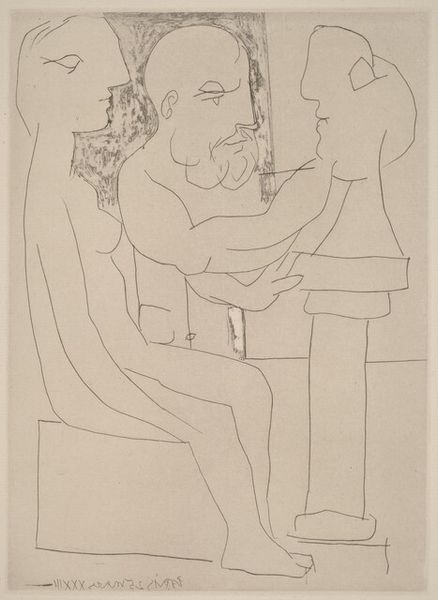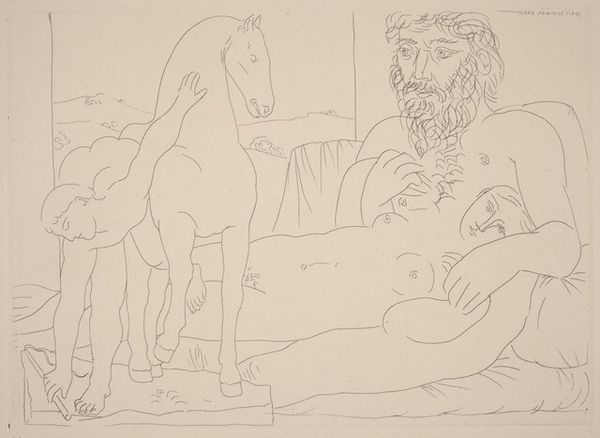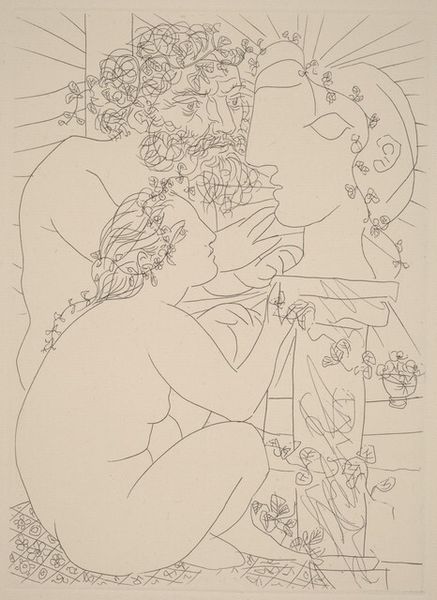
Sculptor at Rest and Surrealist Sculpture (Lerepos du sculpteur et la sculpture surr ealiste) 1933
0:00
0:00
drawing, print, etching, sculpture, pencil
#
portrait
#
drawing
#
cubism
#
ink drawing
# print
#
pen sketch
#
etching
#
pencil sketch
#
figuration
#
sculpture
#
pencil
#
line
#
history-painting
#
surrealism
Dimensions: plate: 19.4 x 26.7 cm (7 5/8 x 10 1/2 in.) sheet: 38.7 x 50.4 cm (15 1/4 x 19 13/16 in.)
Copyright: National Gallery of Art: CC0 1.0
Editor: Here we have Pablo Picasso's "Sculptor at Rest and Surrealist Sculpture," from 1933. It's an etching, and it almost looks like a preliminary sketch, all delicate lines and layers. What do you see in this piece, from your perspective? Curator: Well, immediately, I’m drawn to the process itself. Etching allows for a reproduction of an image, creating a commodity, disrupting the perceived singularity of the "original" artwork. Here, it looks less about celebrating a "great master" and more about interrogating the act of creation itself. Notice how the sculpted form is almost overshadowed by the implied labor behind its production, and what this juxtaposition suggests. What do you think? Editor: That's interesting. I hadn't considered the act of reproduction as part of the message. It kind of demystifies the artist, doesn't it? The artist's "rest" becomes part of the entire economic-production cycle of making the work. Curator: Precisely. The artist and the sculpted object become equal players in a visual equation. Picasso lays bare the tools of production – the etching, the "resting" sculptor - challenging the notion of art existing solely in a vacuum, created by a singular, genius creator. Consider the context: it's 1933, economic depression weighs heavy, and art making has social implications. Does the choice of this style and medium suggest anything about access, the art market or labour? Editor: It kind of opens it up, doesn't it? A print makes the image more accessible. Curator: Exactly! It makes you think about who the art is *for*, not just where it came from. We discussed earlier about labour and the art market... does the etching challenge our traditional assumptions around originality and value? Editor: I think I see what you mean. It’s a complex comment on art, production, and value, made accessible through its very material form. I'll certainly think differently about prints from now on. Curator: Hopefully it’s something everyone will now consider!
Comments
No comments
Be the first to comment and join the conversation on the ultimate creative platform.
